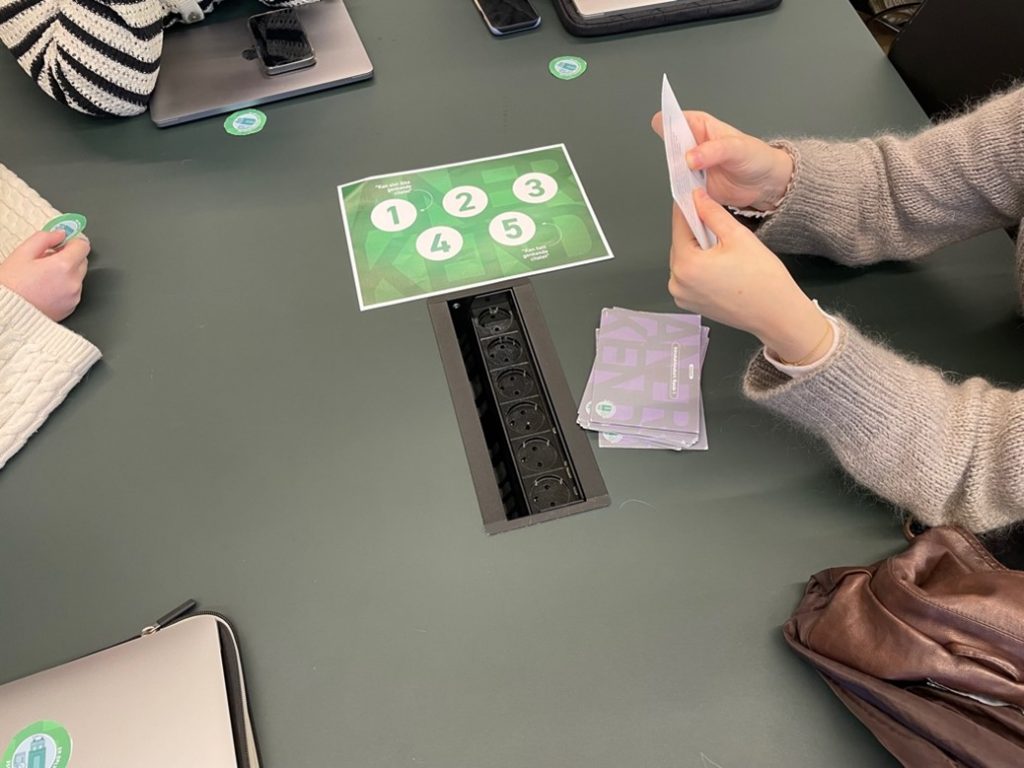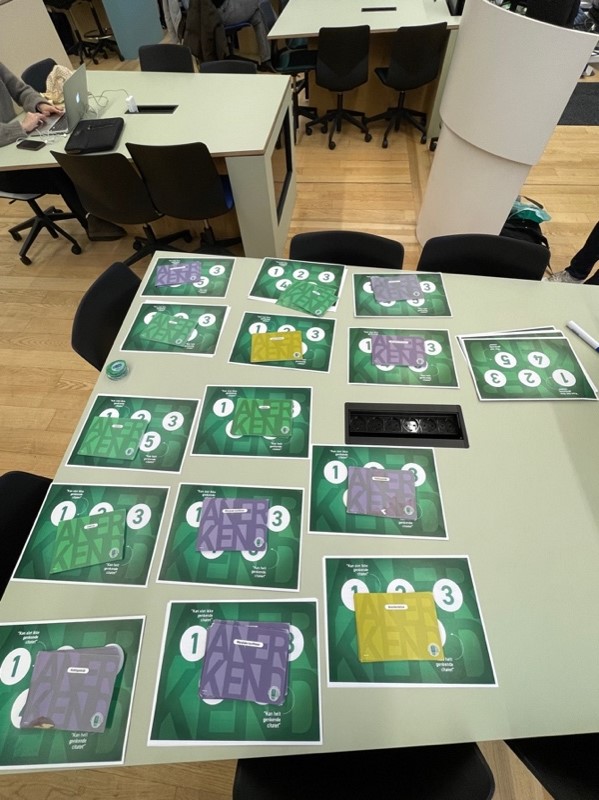By Rachel Ellebye
The dialogue cards were created by Pernille Steen Pedersen, as an initiative to start the conversation on wellbeing. The dialogue cards serve as an interactive activity that can be used by students, employees, or just anyone who is interested in applying wellbeing to real life through an interactive game. The cards are divided into four categories: Moral Conflicts, Leadership, Colleagueship, and Recognition. The purpose of the cards is to start a dialogue amongst people regarding different topics relating to wellbeing at the workplace. Some of the topics include pressure at the workplace, feeling inadequate, and so on. They also serve to build bridges between different generations.
The students from Pernille’s course on Shame, Stress and Leadership took part in using the dialogue cards during the penultimate lecture of the course. The students worked in groups of 3-5 people, each group addressing one of the four topics. By the end of the lecture, the students were asked to share what they had discussed with their groups in a class debriefing, as well as to evaluate through a survey, created by Rachel through Qualtrics.

After the group discussions concluded, the cards were debriefed in class. The students liked the answers, how different they were, and how it started a dialogue regarding work life. In terms of the cards about Recognition, there was a consensus that acknowledgement greatly differed depending on the workplace and the people. While some people seek out acknowledgement on a high level, others did not have the same need. Overall, the cards helped giving others the idea on how different we can be, how we tackle different situations, and how each of us interpret different situations in the workplace.

After the lecture ended, Rachel sent out a survey as an evaluation tool. A total of 16 students took the survey and provided their feedback from the lecture. The overall response to the cards was positive, with 10 finding the experience to be “very positive” and five “positive”. Just one of the respondents remained neutral. There was also a certain agreement among the respondents that the cards were easy to use, a good icebreaker, as well as good for reflection. There was also a consensus that the cards can be used as a tool to build bridges between generations. One of the respondents did point out that if people take it seriously, it serves as a useful tool to build bridges between generations. Another respondent said that it can help people to understand each other better – this can also apply to workplaces, for instance.
By using the dialogue cards as part of the curriculum, the lectures can become more interactive, and students have a better chance of getting to know each other. This may also be useful if the students end up working together in groups, either in class or maybe even in real life at a workplace. If you are interested in getting to know more about the cards, you can access them for free here: https://vpt.dk/nytperspektivpaastress. The cards can be found both in Danish and English.

